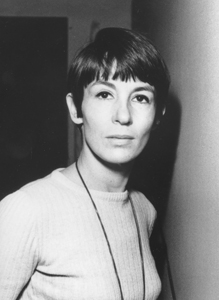
Marcia Hafif
Marcia Hafif (August 15, 1929 – April 17, 2018) was a highly influential American artist known for her contributions to the fields of painting, drawing, and experimental art. Throughout her career, Hafif explored various artistic techniques and mediums.
Her dedication to experimentation and affiliation with the Radical Painting Group solidified her influential role in the art world, leaving a lasting impact on the trajectory of abstract art.
Biography of Marcia Hafif
Marcia Hafif was born in Pomona, California, on August 15, 1929. After completing her studies at Pomona College in 1951, Hafif got married and worked as a third-grade teacher. In the late 1950s, she divorced her husband and pursued further education at Claremont Graduate School, doing graduate work in Italian Renaissance and Far Eastern Art.
In 1961, Hafif traveled to Italy to spend a year in Florence. Passing through Rome, she was captivated by the city's vibrant atmosphere and stayed there for almost eight years.
Upon her return to California in 1969, Hafif joined the first Master of Fine Arts (MFA) class at the University of California, Irvine. During this period, she temporarily shifted her focus from painting and delved into experimenting with photography, film, sound, text, and installation art. Hafif began working on a "Notes on Bob and Nancy" (1970-1977) project, a one-hour-long film featuring Nancy Buchanan and Robert Walker, her fellow graduate students at UCI.
In 1971, Hafif relocated to New York City to rediscover her passion for painting at a time when the validity of this medium was being questioned. Unable to find a satisfactory path forward, she woke up on the morning of January 1, 1972, and decided to create her first Pencil on Paper drawing. By using short vertical marks, Hafif meticulously covered a 24 x 18-inch sheet of drawing paper from top to bottom. This technique later became integral to the development of her "color study" paintings.
Over more than eight years, Hafif held exhibitions at the esteemed Sonnabend Gallery in Soho and Paris. During this time, she created a series of paintings that would later form the foundation of what became known as "The Inventory": 1974, Mass Tone Paintings; 1975, Wall Paintings; 1976, Pencil Drawings; 1978, Neutral Mix Paintings; 1979, Broken Color Paintings at The Clocktower with Alanna Heiss; 1981, Black Paintings.
Throughout the 1980s and 1990s, Hafif continued to develop new series and establish relationships with galleries across Europe. Her artistic journey led her to Munich, then Dusseldorf, and eventually to Vienna, London, Paris, and other cities.
Marcia Hafif died on April 17, 2018.
Marcia Hafif's art style
Marcia Khafif was fascinated by the Buddhist idea of repetition and considered painting as a meditative act. In her work, she used repetition and layering to highlight the qualities of both color and paint. She also mixed paints to create gradients between colors.
Marcia Hafif's dedication to investigating the fundamental aspects of painting extended to her exploration of gradations, tonal shifts, and the interplay between different shades. This exploration of colors and materials led her to an unconventional instrument - spray paint.
Hafif's art style reflected a deep contemplation of abstraction, as she sought to capture the essence and intrinsic qualities of color and form. Her exploration of various mediums, ranging from pencil drawings to color studies, demonstrated her ongoing experimentation and dedication to pushing the boundaries of painting as an art form.
Years:
Born in 1929
Country:
United States of America, Pomona, California